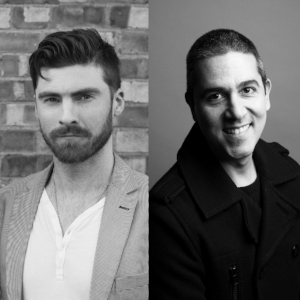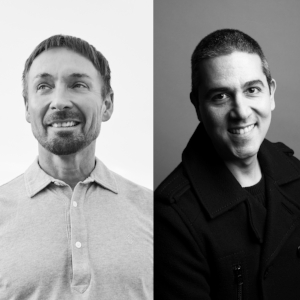This is the seventh post in my series of monthly posts where I speak with people in the creative industries and ask them questions about the things that "I Wish I Had Known" when I started out as a creative myself.
Today I chat with Matthew Dowling, founder of The Freelancer Club, about freelancing in the creative industries and the #NoFreeWork campaign:
1. You started out as a photographer yourself but now you help develop the careers of other creatives. How did that come about?
Yes, I was a photographer for a nearly 12 years and, like a lot of freelancers, didn't have much of a plan when starting out. I had experimented with video and photography whilst at university but didn’t have a clue how to run a freelance business.
Photography came about as I was unable to pay the rent and a friend asked me for a favour. One thing led to another and, before I knew it, I was shooting weddings, properties and events on a regular basis.
About three years into my career I landed a dream job with a fashion company who gave me plenty of work. I was so enamoured with the client and the responsibility that I gave up my other clients.
The first year was great and they promoted me to Head of Fashion. I still had a couple of days each week to focus on my personal projects and the rest of the time I dedicated to them. It was the perfect mix of paid work and artistic fulfilment.
During the second year of our relationship, an invoice went unpaid. When I asked why they told me that is was an accountancy error. After three months went by without any resolution I had to borrow money from friends and things started to get very difficult.
After five months I couldn't afford to pay rent and, without money coming in from other clients, it was a desperate situation. I was still working for the client whilst all of this was taking place and, in my naïveté, believed their excuses. I honestly thought that I would get paid a lump sum so that I could pay everybody the money I owed and get back on track.
After 6 months of unpaid invoices, I visited their head office to discover why I hadn't been paid in nearly half a year. They had gone bankrupt and were using me to produce content for their website to sell the remainder of their stock.
The story made the national press and led to many other freelancers reaching out to me with similar tales. Although it was a low point, this was the moment that planted the seed for The Freelancer Club.
2. We met when you were running Shooting Beauty with Nina Malone, which in time became The Freelancer Club. What sort of help can freelancers get from you?
Both Nina and I were freelancers for years so we know what its like to feel lost and frustrated. On day one, we listed the areas that we struggled with when we were freelancers and how we could offer freelancers that support.
Having spoken with hundreds of freelancers at Shooting Beauty, we had a pretty good idea what was missing. The number one reason why freelancers failed was due to a lack business understanding.
The Freelancer Club provides support to freelancers, not just by offering access to paid jobs, but opportunities to collaborate with other freelancers, free business and legal advice, guides on all aspects of freelance business, articles and videos that talk about the truth behind freelancing and how it feels to be a freelancer. We also provide access to a variety of events, workshops and social gatherings. The main aspect of the Club is community and all fees are reinvested into the club to support the members.
3. At the beginning, The Freelancer Club was aimed at creatives in the fashion industry but it has evolved to include freelancers from other disciplines as well. Who is this club for?
We haven’t branched out too much since launch other than to offer more paid work in other sectors. When we first launched, our focus was on photographers, hair & makeup artists, models and stylists in the fashion industry. We’ve now opened up to videographers, nail artists, illustrators and we’re starting to reach graphic designer, dancers, animators and other creative fields.
We recognised that the fashion industry, famous for poorly paid jobs and a lot of unpaid work, was not enough. We decided to list jobs in the wedding, events, corporate, beauty, sport and lifestyle sectors as well as fashion to help freelancers earn a living.
4. You have mentioned in the past that you believe in the ubiquity that a freelance career provides and how nowadays we can work from anywhere on the planet and make our clients and peers feel like we are next to them. Is this how The Freelancer Club is set up?
The vision many aspiring freelancers have when they think of the lifestyle is travelling the globe, doing something they are passionate about and being in control of their own destiny. All of this is attainable but it takes hard work, smart work, and the mental ability to accept this idea as a reality.
Most of our members offer a face to face service so travelling far is not always feasible, however, the freedom to dictate one's life is still at the core of freelancing.
The Freelancer Club is setup using a freelance structure. Based all over the world, we have sourced forward-thinking, talented freelancers who are the lifeblood of the business. Without them, The Freelancer Club would not be possible.
5. A few years ago, you started the #NoFreeWork campaign. Can you tell us the motivations behind it and what the campaign is about?
The campaign was an extension of my personal story. We made a firm decision when we launched The Freelancer Club not to post any unpaid work on the site.
We knew hundreds of freelancers who had been asked to work for free in exchange for experience, exposure or prestige and did not want to contribute to that practice.
The #NOFREEWORK campaign was initially launched to raise awareness about unpaid work between freelancers and employers. Over time it has become so much more.
We teamed up with IPSE, the UK's largest membership organisation for freelancers and the self-employed, and released a national survey. The results were shocking. We learned that, on average, every freelancer is losing over £5,000 as a direct result of unpaid work. Moreover, the practice completely undermines the value that freelancers provide the UK economy and demeans the individual freelancer involved.
The survey results enabled us to gain press coverage. The Guardian, The Mail and a number of prominent online publications wrote articles on it. This led to a roundtable discussion, chaired by The Guardian, with some of the creative industry’s most influential unions, universities, journalists and leaders.
6. What can be considered working for free?
If a company or an individual stands to make money from a job, this role should be classed as a paid job. Many companies ask freelancers to work for the experience, the exposure or privilege of working with a well-known brand. We believe these aspects should be a consequence of a fairly paid job and not a substitution.
7. Is testing, a regular practice in the creative industry, considered working for free?
No, quite the opposite. Test Shooting or TFP (time for print) is a collaboration between freelancers to add images to portfolios, practice new techniques and meet others in the industry. So long as nobody makes money from the images, it’s a great way to develop a freelance business without bowing to exploitative unpaid work.
We’ve seen companies classify a ‘job’ as a test shoot to avoid having to pay freelancers. Understanding the difference is vital.
8. Where do you see the #NoFreeWork campaign going?
Our latest achievement took place in Parliament where we discussed the possibility of changing legalisation to offer freelancers more rights. A similar bill passed in New York and we’re very optimistic that we’ll push the NOFREEWORK bill through in the UK. The new legislation would make contracts between freelancers and employers mandatory over a certain amount, make it easier to collect unpaid invoices and incentivise the employer to pay freelancers on time. We have also proposed that the Small Business Commissioner publish a list of serial offenders.
In regards to the issue of unpaid work, we continue to partner with influential brands, companies and institutions who have pledged their support to our campaign. Over time, we hope to see a tipping point whereby companies who do not support the #NOFREEWORK campaign will be shunned by the industry.
9. Apart from running The Freelancer Club and the #NoFreeWork campaign, you also give talks at universities and events. What sort of topics do you cover? Are these talks open to the public?
Yes, I believe it’s very important to engage with the next generation of freelancers, understand their challenges and listen to their concerns. When I have time, I speak at various universities and events on entrepreneurialism, talk about the truth behind freelancing and knowing one’s value. Some talks are exclusively for a university, institution or members club, others are open to the public.
I also consult freelancers and startups, one on one, to help with their business and personal development.
10. Where can freelancers learn more about you, The Freelancer Club and the #NoFreeWork campaign?
The best place to learn more about our various ventures and projects is on FreelancerClub.net
Fantastic! Thank you so much, Matt for your time and all this valuable information. This is everything that "I Wish I Had Known"!







